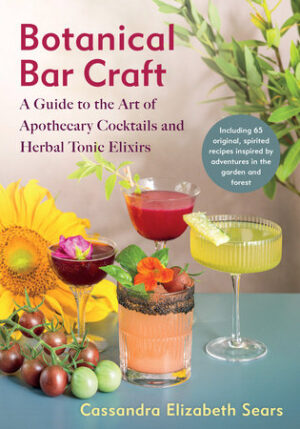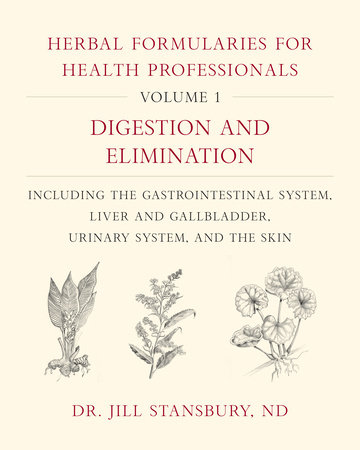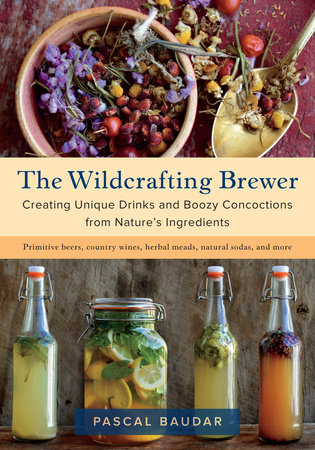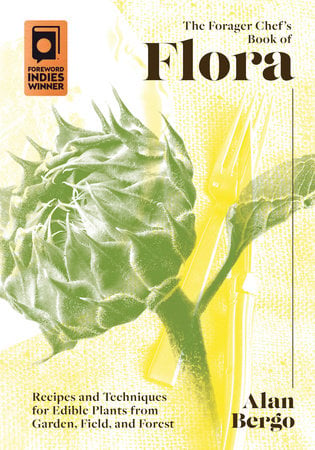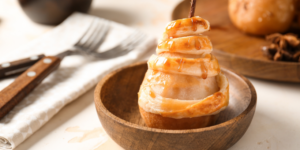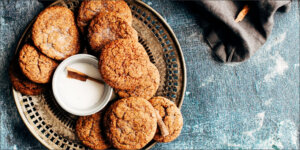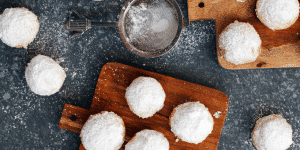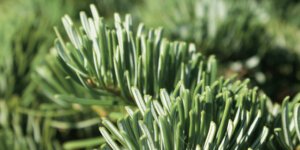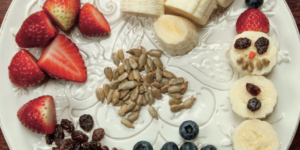Must Make: Lavender Sage Earl Grey Mocktail & Lavender Sage Honey Simple Syrup

Want a great fresh simple syrup recipe? This simple syrup is straightforward and easy to make and use.
Sage and lavender offer unique and complementary flavor profiles. Lavender is a relaxing remedy with a long history of use for anxiety and sleep. While the wise mint family plant, sage will help you focus.
Then use it in The Common Sage, an Earl Grey based mocktail recipe below. It’s a mellow, yet flavorful drink that’s balanced, complex, and a delight to sip. You’re gonna love it!
When making these recipes (or any other) “Everything is inspiration and the rest is practice.”
The following excerpt is from Botanical Bar Craft: A Guide to the Art of Apothecary Cocktails and Herbal Tonic Elixirs by Cassandra Elizabeth Sears. It has been adapted for the web.
Lavender monograph
Some of you may be asking: What is a monograph?
A monograph is a text dedicated to a single subject; in this case the subject is a plant. The purpose of these plant profiles is to help you get acquainted. A monograph is a good place to start when you’re learning a new plant personality.
I hope they will give you the resources you need to go deeper than first impressions, because true knowledge comes from experience. These monographs are your introduction, but the relationship will only bloom when you touch, smell, taste, and spend time with these plants in a garden, in the woods and fields, and in your kitchen or behind the bar.
Each monograph covers several topics: habitat and cultivation; taste and energetics; actions and uses; constituents and chemistry; preparation
Lavender
Lavandula spp. • Lamiaceae

Habitat and Cultivation
Native to the Mediterranean, lavender is a woody perennial that likes warm and well-drained sandy, chalky soils. Plants should be mulched well with straw or leaves for the winter in areas with harsh cold. Species used include Lavandula angustifolia and L. stoechas.
The plant prefers neutral to slightly alkaline soils; test your soil pH and amend accordingly before planting if needed. Plant seedlings 18 to 24 inches (46–61 cm) apart; lavender looks best planted in masses, and it’s traditional to plant it along walkways.
Lavender is best propagated by taking cuttings. It’s drought-tolerant once established. Prune older woody plants in the spring by cutting back stems by a third.
Taste and Energetics
pungent • sweet • acrid • bitter • diffusive • cooling
Actions and Uses
antiseptic • antispasmodic • aromatic • carminative • cholagogue • diuretic • nervine • perfume • sedative • stimulant • vermifuge
—————
The Complete German Commission E Monographs, a therapeutic guide to herbal medicine, approves Lavandula angustifolia for loss of appetite, nervousness and insomnia, circulatory disorders, and dyspeptic complaints. One nickname for lavender is palsy drops, as it was used for relieving tension headaches.
The Latin name comes from lavare, meaning “to wash.” Lavender has been used as an antiseptic agent and added to baths and soap for thousands of years.
Lavender is a relaxing remedy with a long history of use for anxiety and sleep, affirmed by modern research. It is especially useful for those with a high degree of neuromuscular tension that may negatively impact digestion and peripheral circulation. It is also beneficial for hyperactivity disorders and those who need to relax to focus, such as those with ADHD.
The essential oil of L. stoechas is being studied for its potential ability to protect the liver and renal function.
Constituents and Chemistry
flavonoids • phenolic acids • terpenes
Preparation
Lavender dries well when the stems are tied in bunches and hung upside down. It is a great ingredient for winter tea blends (aka syrups!) as well as a prime candidate for hydrosol distillation. It’s delicious in glycerite blends and infused honeys or oxymels.
My recipes are a form of art inspired by nature.
Some of the names are nods to the stories of people and places that inspired the creation of a recipe or the choice of a particular ingredient. Good recipe names are evocative, creating a storyline to tickle the imagination of the imbiber.
Sometimes a new recipe is inspired by the function you wish the drink to serve. Other times a drink comes to life through the energy and flavor of a moment, and its tonic effects are one of the wonderful spontaneous benefits of making and drinking botanical beverages.
Recipe: The Common Sage
antioxidant • aromatic • carminative • nervine • nootropic

Drink sage to be sage. This wise mint family plant will help you focus. Garden sage is a nootropic, enhancing cognitive function through its antioxidant properties.
Ingredients
- Makes 1 drink
- 6 ounces (180 ml) brewed Earl Grey tea
- 4 ounces (120 ml) Lavender Sage Honey Tea Syrup (recipe follows)
- 2 ounces (60 ml) oat milk
- 1/2 ounce (15 ml) lemon juice
- 1 egg white
- 1/4 ounce (7.5 ml) juniper hydrosol, or 1/2 ounce (15 ml) juniper berry tea, or several drops juniper extract
- 1–2 dropperfuls rhodiola tincture
- Pinch ground cinnamon
- Whole nutmeg, for garnishing
- Small sprig dried juniper, for garnishing
Instructions
Brew some Earl Grey tea and allow it to cool. Put 6 ounces of the tea in a shaker tin with the Lavender Sage Honey Tea Syrup, oat milk, lemon juice, egg white, juniper hydrosol, rhodiola tincture, and cinnamon. Shake first without ice, then with ice. Strain into a coupe.
Grate some nutmeg over the surface of the drink. Light the juniper sprig on fire, and when the flame dies but the sprig is still smoldering, place it across the top of the glass and serve.
Lavender Sage Honey Tea Syrup

Generally, it is better to make syrups ahead of time and allow them to cool to room temperature before combining with the other ingredients for a drink. Otherwise, the warm tea may cause too much ice to melt, leading to excessive water and an unbalanced drink.
Ingredients
- Makes 1 cup (240 ml)
- 1 tablespoon dried sage or 2 tablespoons fresh
- 1 tablespoon lavender flowers
- Raw unfiltered honey
Instructions
Pour 8 ounces (240 ml) of hot water over the sage and lavender in a teapot or jar. Cover and steep for 15 minutes. Strain and add honey to taste (make it slightly sweeter than you would want to drink plain).
About Botanical Bar Craft
This book is both an herbal medicine book for bartenders and a mixology book for herbalists. My goal as a bartender-herbalist is to use the bar as an engaging platform for teaching about plants. In this book I invite you to step inside the fantastic and magical green realm of the plant kingdom—a colorful place of generous abundance, sparking unlimited curiosity.
Join me at the intersection of herbal medicine and craft cocktails. Both places are inspiring, sensually stimulating, fully alive, and free.
“In this beautiful and creative book, Cassandra weaves together the time-honored art of making cocktails with a fresh approach to incorporating botanicals for drinks that build wellness and taste delicious!”
Recommended Reads
Recent Articles
Indulge in the sweet aroma of these pastry-wrapped pears! Easy to make and stunning to serve, these pastry-wrapped pears are a game-changer.
Read MoreThe scent of fir trees is a holiday staple 🎄 Imagine sipping a festive cocktail infused with the unmistakable taste of fir ✨ This holiday season, elevate your entertaining game by introducing fir to your menu – from classy cocktails to rustic potatoes!
Read MoreDitch boring snacks and upgrade to adorable fruit & veggie treats you’ll love! Brighten up snack time this winter using fruits and veggies we all know and love. Can you resist taking a bite of these cuties?
Read More

